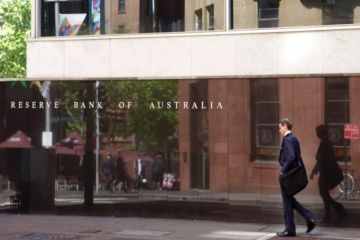Interior dialogue
Selling a property used to mean choosing an agent and cleaning the windows. But with websites displaying multiple photographs of sale houses and buyers attuned to reality TV-standard presentation, styling for sale is the new normal. Increasingly, time-poor vendors hire stylists to do everything from despatching their furniture to storage to making beds with special linen.
“Houses that don’t get that attention, people walk in and they are a bit disappointed. Agents say that is the feedback they get,” says Megan Robinson of Cooper Robinson, stylists for Marshall White.
But with buyers complaining that minimalist styling “looks as though no one lives here”, stylists are striving for a welcoming look.
Robinson recalls buyers complaining about a “sterile-looking” kitchen she styled early in her career. Now she uses rows of fresh herbs, bottles of olive oil and fresh fruit to add warmth and authenticity.
A canister with a few utensils can make a kitchen “look as though you might be about to cook that night”, she says. Recently, she used eggcups beside a basket of eggs. “It adds something to it that is a bit of a story, a little bit interesting.”
Robinson occasionally replaces all of an owner’s furniture but mostly decides which items will work, sometimes in another room. “It is not that display home loo, straight off The Block.”
She advocates a co-ordinated look for clarity: “If there are many colours and it is cluttered and lots and lots of things [are] going on, it can be distracting.” She recommends neutral cushions with just a couple of brights, such as red. Professionally hung art helps – most people’s art is too high. Mirrors, particularly above the fireplace, make a room look bigger.
When Kim Hallis of Create Expectations began styling 15 years ago, the work was mostly flats renovated by developers. Home styling began seven to eight years ago and is increasingly sought: “Everybody knows what styling is now,” she says, and adds that buyers sometimes think that if the vendors have not gone to the trouble of styling, their expectations are lower.
Hallis says styling requires sensitivity. “People need consideration and nurturing; they don’t want half the house ripped out by a stranger.” With about 40 properties furnished at any time, Hallis retains as much as possible of the owner’s possessions. “Usually, there are some beautiful pieces of furniture, which we can keep, and then I look at what we have to get rid of. People need to strip their home down to the bare minimum.”
She adds furnishings from her three warehouses in Clayton.
“I often go into people’s buffets and cupboards. It is amazing what people have, wedding presents that have not even been opened. People forget what they have got.” She favours displaying family photographs – “it just makes it look like a home” – though those huge wall collages with the kids’ pictures stuck on have to go.
Costs for styling vary, but usually range from a few thousand dollars for a basic service combining the owners’ goods with items and ideas supplied by the stylist, to more than $10,000 for a full service, including daily visits with flower-changing and bed making.
Style gives substance
Anthony Reis of Marshall White Malvern says the days of marketing a house that’s left the way the owners live in it are gone. Today’s buyers, especially younger buyers, appreciate a high standard of presentation, not a house filled with large furniture and the owners’ ornaments and photographs.
While some clients resist or cannot afford styling, Mr Reis usually recommends it. “You are showcasing their home. It appears on the internet and the world can see it,” he says. “You only get one real chance. It is something that is now part and parcel of selling a home. Engage a stylist, or at least have a stylist to give you some tips about appropriate furniture and taking some furniture out.”
Mr Reis says that can increase the selling price. “It is all about building the emotions in a buyer. Potential buyers are looking for love at first sight. They see the way it is presented and what it could be like for them and all of a sudden it becomes emotional.”
Mr Reis recently sold a Malvern East house that was styled by Megan Robinson. She combined furnishings from her warehouse, hire furniture and the owners’ pieces, including family photographs, to create an uncluttered, warm environment that felt like a home.
Like Mr Reis, Edward Hobbs of Biggin & Scott Richmond believes first impressions are vital and buyers form immediate judgments.
But it is important to strike a balance between lived-in warmth and sterility, he says. “I think some stylists try to be at the cutting edge and miss the mark a bit.”
Mr Hobbs favours including the vendor’s family photographs: “I think some buyers like to get a feeling that they are linked a bit to the owner. I recommend to owners that they leave them up there.”
Creating the look:
Lighting: Bedrooms should have two bedside lamps. Have them on during inspections and create warm lighting in each room.
Layers: Add items to stripped-back rooms until a warm, welcoming but uncluttered look is achieved.
Harmony: A different feature colour in each room will jar as buyers peruse website photos.
Zones: Reduce furniture but ensure space for separate zones such as dining and study, with enough room for buyers to move freely around.
Source: The Real Estate Stylist
We recommend
We thought you might like
States
Capital Cities
Capital Cities - Rentals
Popular Areas
Allhomes
More







